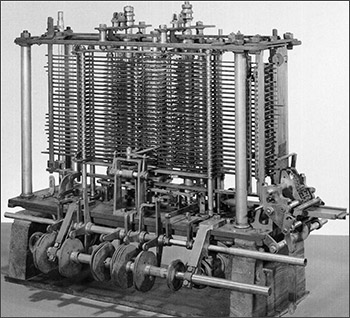Analytical engine

The analytical engine is a machine, first proposed by Charles Babbage in 1837, that is considered to be the concept for the first general mechanical computer. The design featured an ALU (arithmetic logic unit) and permitted basic programmatic flow control. It was programmed using punch cards (inspired by the Jacquard Loom. It also featured integrated memory. For these reasons, historians consider it to be the first design concept of a general-purpose computer.
Unfortunately, because of a lack of funding, the Analytical Engine was never built while Babbage was alive. It wasn't until 1910 that Henry Babbage, Charles Babbage's youngest son completed a portion of this machine that performed basic calculations.
While Charles Babbage was designing his Analytical Engine, a similar device was also being developed by Percy Ludgate, whose machine used multiplication instead of addition.
